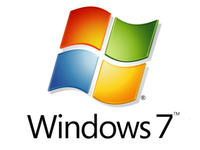下载我们的恢复和修复磁盘微软Windows Vista (也适用于Windows 7 , 8 , XP或Server版本),可用于访问系统恢复工具,让您使用防病毒的选项,系统还原,文件和图片的备份和恢复,自动系统修复,以及一个命令行提示符手动高级恢复。
易回收精华(或EasyRE )是55至135 MIB下载图像随时可以直接刻录到CD,DVD或USB记忆棒。易回收要领功能包括:
- 自动查找并修复错误
- 工作原理,甚至当你不能进入Windows
- 从病毒感染中恢复
- 恢复您的PC到工作状态
- 访问和备份您的重要数据
- 使用你的电脑,即使它不工作
磁盘进行恢复和修复
如果你像大多数PC用户,你可能得到的Windows Vista使用新的PC或笔记本电脑。如果你像99 %的人口,你的主要生产厂家之一得到你的新机器。
戴尔,宏碁,惠普,东芝,联想,它们都有一个共同点:他们不给你一个真正的Windows Vista安装盘与您的购买。
相反,他们捆绑他们所谓的“复盘” (如果你很幸运,是的 – 否则你就会有一个恢复分区代替)与您的机器,离开它。
不要紧,你只是付了一千块钱的机器,配备了一个有效的Windows Vista授权 – 您的电脑制造商只是不想花这个钱(或者承担责任)给予您在Windows Vista安装DVD陪你昂贵的购买。
问题是,与Windows Vista ,安装媒体提供一个以上的目的。这不只是为了让安装Windows的方法,这也是回收borked安装的唯一途径。
该DVD有一个“恢复中心” ,为您提供通过自动恢复(搜索问题,并尝试自动修复它们)回收系统的选项,滚动回一个系统还原点,恢复一个完整的PC备份,或访问一个命令行恢复控制台,高级恢复的目的。
下载恢复盘适用于Windows Vista

易回收精华修复过程是无损,恢复电脑没有格式化或者重新安装Windows 。
强大的修复过程可以解决很多问题,微软自己的启动修复不能。除了业界领先的自动修复功能,该磁盘会给你访问以下内容:
- 系统还原
- Web浏览器
- 分区编辑器
- 防病毒扫描
- 数据/文件备份和恢复
- 命令行/终端访问
我们的恢复盘支持x86和x64平台和所有的Windows Vista版本,包括32位和64位版本:
- Windows Vista旗舰版( 32位和64位版本)
- Windows Vista企业版( 32位和64位版本)
- Windows Vista商业版( 32位和64位版本)
- Windows Vista家庭高级版(32位和64位版本)
- 视窗Vista家庭基本版( 32位和64位版本)
- Windows Vista的启动器( 32位版本)
和所有的Service Pack中:
- Windows Vista服务包1 (SP1)
- Windows Vista服务包2(SP2)
本光盘为120 MIB下载标准的ISO格式,你需要刻录到CD或DVD之前,你可以使用它作为一个可引导的恢复介质。您也可以将其刻录在USB记忆棒。
刻录到CD,DVD或USB记忆棒
NeoSmart技术已出版关于如何刻录ISO镜像刻录到CD或DVD与你喜爱的刻录程序,它可以读取,如果你需要更多信息或有关此主题的帮助指导。您可以用ImgBurn的,酒精120 %或ActiveISO烧了它.
您也可以将其刻录在USB记忆棒,如果你不希望使用CD或DVD 。我们出版了做一个EasyRE恢复USB的指南。
兼容于PC制造商
这种恢复和修复磁盘是台式机,工作站,笔记本电脑,笔记本电脑,上网本,来自各大PC厂商的Ultrabook和服务器,如戴尔,惠普,华硕,宏碁或联想以及更多兼容。
戴尔,惠普,华硕,宏碁
戴尔
磁盘与所有戴尔笔记本电脑和台式电脑,包括其所有生产的系列,如Adamo的,的Inspiron , Studio中的Vostro , XPS ,纬度兼容。
惠普
磁盘与HP电脑兼容:羡慕, EliteBook系列,居家必备,展馆和x2的笔记本电脑和羡慕,居家必备和Pavilion台式机和所有功能于一台台式电脑。
华硕
这是一个与笔记本电脑,超级本,笔记本和台式机华硕兼容。
它适用于由华硕制造的任何一台计算机,如果它运行的是Windows XP,VISTA , 7 , 8或以下的Windows Server版本:2003 ,2008 , 2012
宏碁
它与具有Windows安装,包括这些生产系列中的任何宏碁电脑兼容:
- 的Aspire R,的Aspire V3与Aspire E的笔记本电脑
- 向往S7 , S5的Aspire方面,Aspire S3 ,卓望P,的Aspire M,的Aspire 2013 ,的Aspire V5超薄电脑
- 的Aspire One上网本
- 的Aspire M和T,的Aspire X和捕食者G代表桌面
联想,东芝,三星
联想
您也可以下载修复磁盘的任何联想电脑,如:
- ThinkPad的,的IdeaPad ,基本系列笔记本电脑
- THINKCENTRE , IDEACENTRE和Essentials系列台式电脑
东芝
这是一个与任何运行Windows的东芝电脑兼容:
- 卫星,东芝Qosmio ,的Portege , TECRA ,基拉家族系列
- 所有功能于一体台式机系列
三星
磁盘是符合三星的笔记本电脑和台式机兼容,其中包括:
- ATIV书,游戏和商务PC系列笔记本电脑
- ATIV我为人人- in-One的台式机
IBM, COMPAQ , GATEWAY , EMACHINES
IBM
IBM个人电脑事业部于2005年收购了联想。
这个磁盘支持IBM的台式机和笔记本电脑型号,最引人注目的是ThinkPad产品线。
康柏
康柏于2002年被惠普收购,但一些著名的电脑线系列仍在我们的客户使用。
我们的磁盘可与康柏笔记本电脑和台式电脑,包括康柏Presario系列。
网关
网关计算机是在2007年收购了宏碁。
我们的磁盘是网关电脑上网,笔记本电脑和台式机电脑,如兼容:
- 系列SX , DX和ZX一个桌面系统
- NE和NV系列笔记本
- LT系列上网本
eMachines
eMachines的电脑被制造,直到2004年,网关电脑所带来的公司。网关计算机后来被宏碁在2007年收购,但eMachines的PC品牌使用到2012年。
如果你拥有一台计算机从这台计算机的品牌,我们的磁盘与eMachines的电脑兼容。
磁盘的Windows 7 , 8 , XP或Server版本
Windows 7
你可以得到我们的恢复盘适用于Windows 7支持的所有版本:旗舰版,企业版,专业版,家庭高级版,家庭基础版和精简。Download for Windows 7.
Windows 8
您也可以得到恢复盘为Windows 8 。
Download for Windows 8.
Windows XP
容易恢复Essentials是可用于Windows XP的用户,它支持所有的服务包:服务包1 ( SP1)的Service Pack 2(SP2)和Service Pack 3 ( SP3) 。
Windows Server 2003, 2008, 2012
易回收精华支持微软的Windows Server版本:2003年,2008年和2012年。
支持
我们的磁盘支持所有的Windows服务包(Windows XP SP1 , Windows XP SP2中的Windows XP SP3 , Windows Vista SP1的中,Windows Vista SP2 , Windows 7的SP1中,Windows 7 SP2中,Windows 8.1 ,在Windows Server 2003 R2的Windows Server 2008 R2和在Windows Server 2012 R2 。

 Seit Windows Vista hat Microsoft es nicht mehr möglich, eine “Reparatur-Installation” (auch als “in-Place-Upgrade” bezeichnet) von Windows auszuführen. Stattdessen wird das Windows-Setup-DVD bietet nun eine Funktion namens “Startup Repair”, mit dem eine (begrenzte) Anzahl von Reparatur-und Recovery-Optionen ausprobiert werden können. [
Seit Windows Vista hat Microsoft es nicht mehr möglich, eine “Reparatur-Installation” (auch als “in-Place-Upgrade” bezeichnet) von Windows auszuführen. Stattdessen wird das Windows-Setup-DVD bietet nun eine Funktion namens “Startup Repair”, mit dem eine (begrenzte) Anzahl von Reparatur-und Recovery-Optionen ausprobiert werden können. [